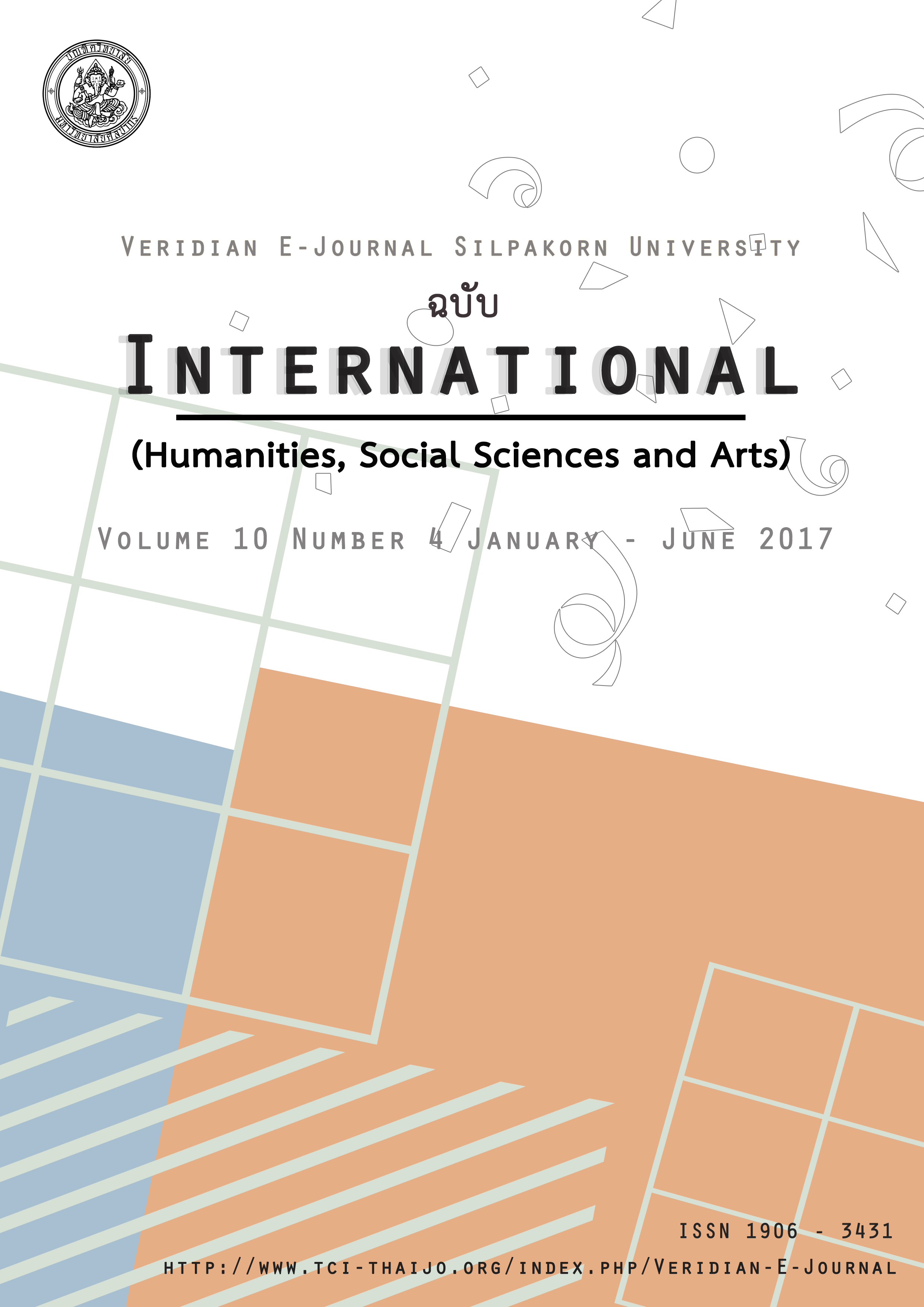Infrastructure Factors Influencing Urban Cycling in a Cultural Heritage City
Main Article Content
บทคัดย่อ
The purpose of this study is to analyze the cultural heritage city infrastructure factors of cycling in the urban areas which is based on a case study in Chiang Mai, Thailand. The data was collected by a Likert questionnaire from four hundred of the road users by using the Exploratory Factor Analysis (EFA), Confirmatory Factor Analysis (CFA) and Structural Equation Model (SEM). According to the analysis results, there are 4 latent variances of the EFA which are a Bicycle Lane (BL), a Bicycle Entrepreneur (BE), a Bicycle Network (BN) and a Bicycle Parking (BP). As in the CFA analysis, it found that all of the latent variances has validity or consistent with the empirical data as shown in the CFA, and the SEM analysis also has validity or consistent with the empirical data as well (c2 = 91.427, df = 79, p value = .160, GFI = .977, IFI =.997, CFI = .997, RMSEA = .020). Additionally, a Bicycle Lane (BL) factor has been directly influenced both in a Bicycle Network (BN) factor and a Bicycle Entrepreneur (BE) factor while a Bicycle Entrepreneur (BE) factor has been directly influencing a Bicycle Network (BN) factor and a Bicycle Parking (BP) factor.
การศึกษานี้มีจุดประสงค์เพื่อวิเคราะห์ปัจจจัยด้านระบบโครงสร้างพื้นฐานของเมืองมรดกทางวัฒนธรรมที่มีอิทธิพลต่อการใช้จักรยานในเขตเมือง โดยศึกษากรณีเมืองเชียงใหม่ ประเทศไทย ข้อมูลสำหรับการวิเคราะห์ได้จากแบบสอบถามแบบประมาณค่า (Likert) จากผู้ใช้รถใช้ถนนจำนวน 400 คน เก็บช้อมูลโดยใช้วิธีสุ่มอย่างง่าย ข้อมูลใช้การวิเคราะห์องค์ประกอบเชิงสำรวจ (Exploratory Factor Analysis : EFA) การวิเคราะห์องค์ประกอบเชิงยืนยัน (Confirmatory Factor Analysis : CFA) และการวิเคราะห์โมเดลสมการโครงการ (Structural Equation Model: SEM) ผลการวิเคราะห์ข้อมูลพบว่า องค์ประกอบเชิงสำรวจ (EFA) แบ่งได้ 4 ปัจจัยแฝง (Latent variances) ได้แก่ ลักษณะกายภาพของทางจักรยาน (Bicycle Lane: BL) ผู้ประกอบการจักรยาน (Bicycle Entrepreneur: BE) โครงข่ายทางจักรยาน (Bicycle network: BN) และสถานที่จอดจักรยาน (Bicycle Parking: BP) เมื่อวิเคราะห์องค์ประกอบเชิงยืนยัน (CFA) พบว่า ทุกปัจจัยแฝงของโมเดลสมการโครงสร้างมีความตรงเชิงโครงสร้างหรือมีความสอดคล้องกับข้อมูลเชิงประจักษ์ ส่วนผลการวิเคราะห์โมเดลสมการโครงสร้าง (SEM) พบว่า โมเดลมีความตรงเชิงโครงสร้างหรือมีความสอดคล้องกับข้อมูลเชิงประจักษ์ (c2 = 91.427, df = 79, p-value = .160, GFI = .977, IFI =.997, CFI = .997, RMSEA = .020) โดยปัจจัยแฝง ลักษณะกายภาพของทางจักรยาน (BL) มีอิทธิพลโดยตรงกับปัจจัยแฝง โครงข่ายทางจักรยาน (BN) และปัจจัยแฝง ผู้ประกอบการจักรยาน (BE) ขณะที่ปัจจัยแฝง ผู้ประกอบการจักรยาน (BE) มีอิทธิพลโดยตรงกับ โครงข่ายทางจักรยาน (BN) และปัจจัยแฝง สถานที่จอดจักรยาน (BP)

